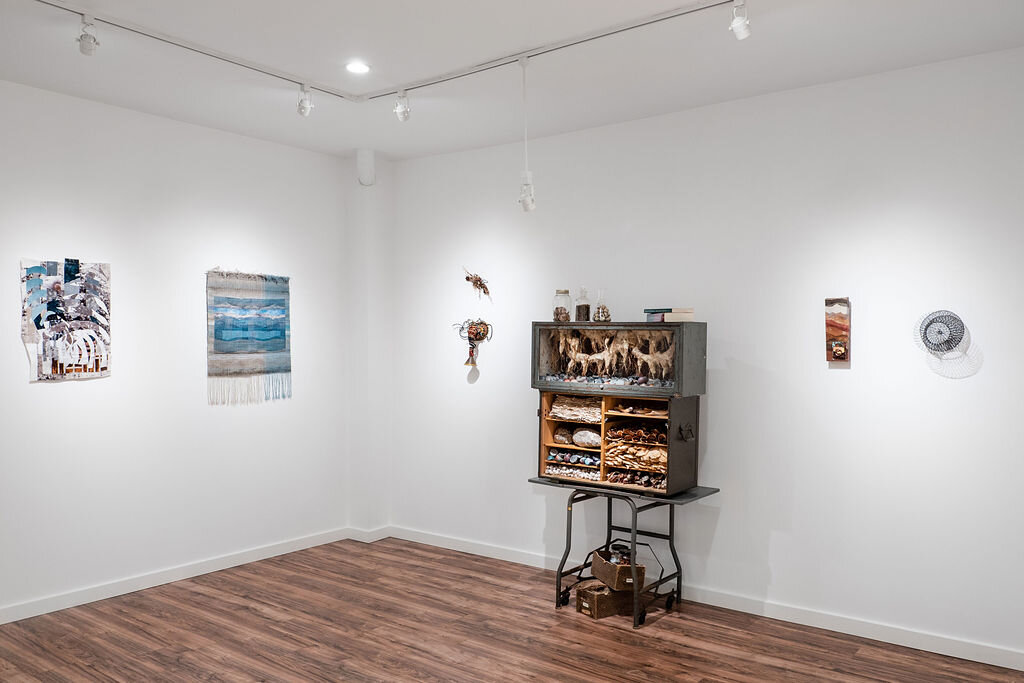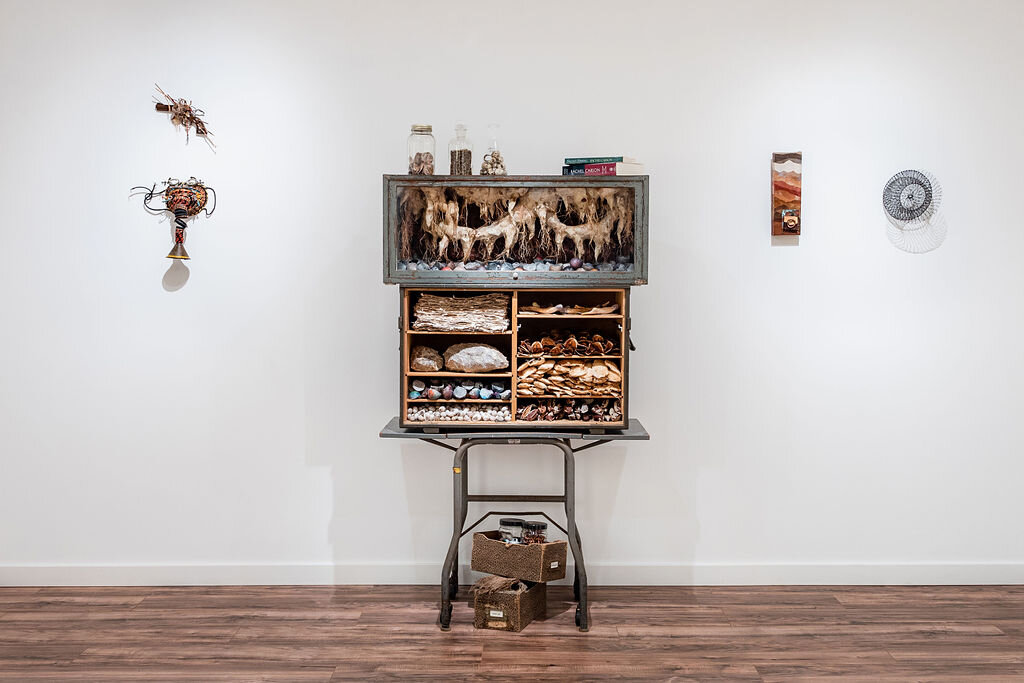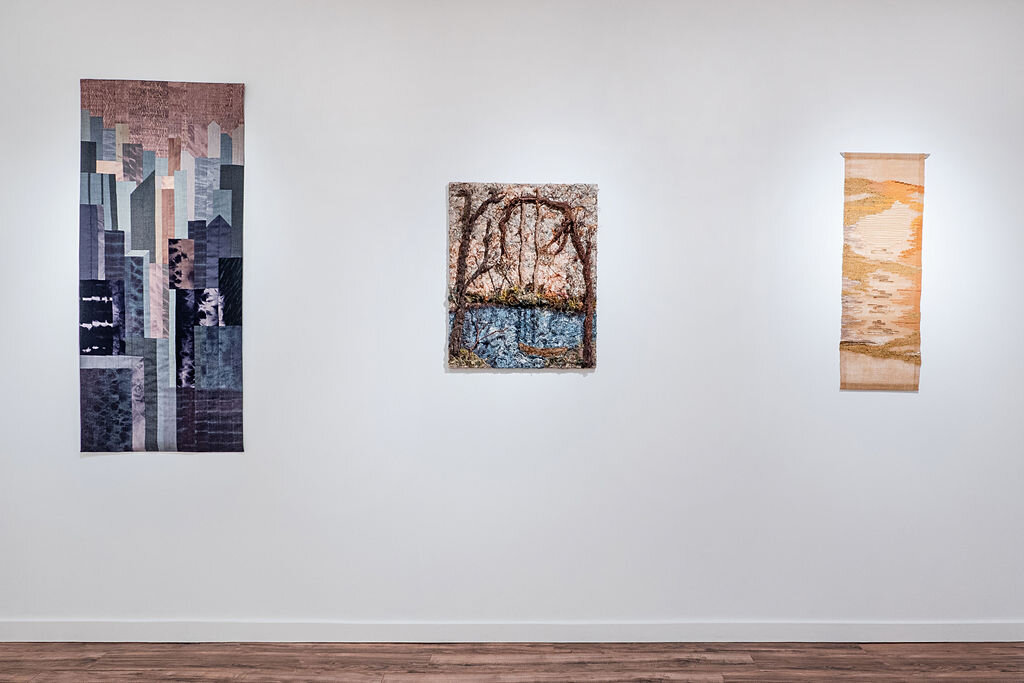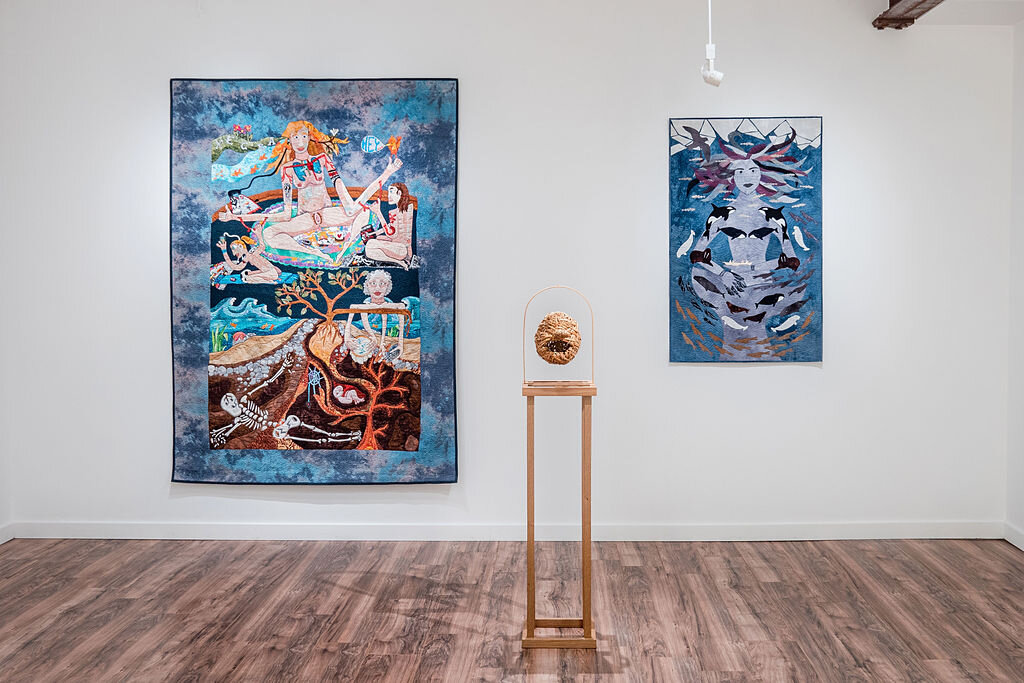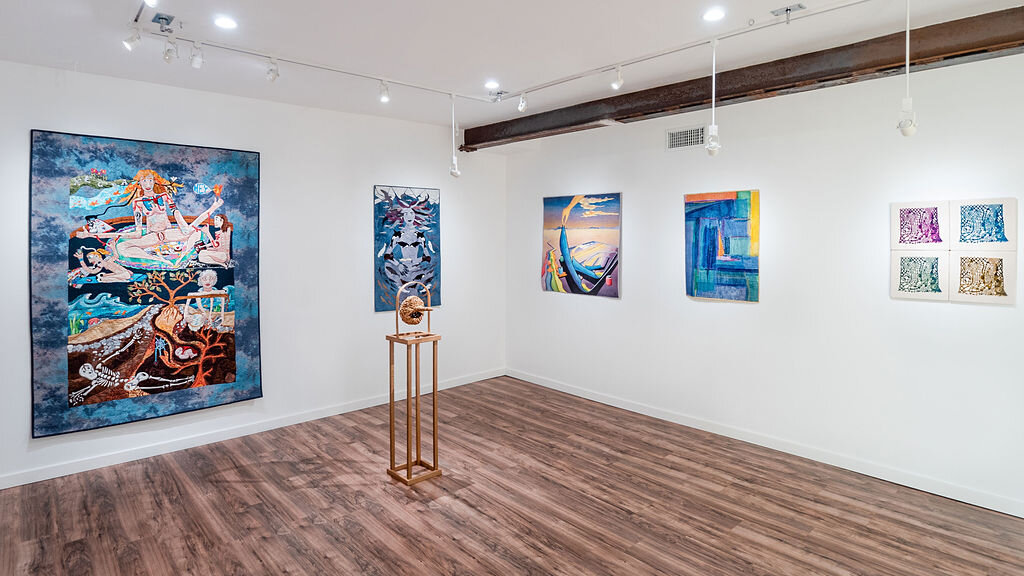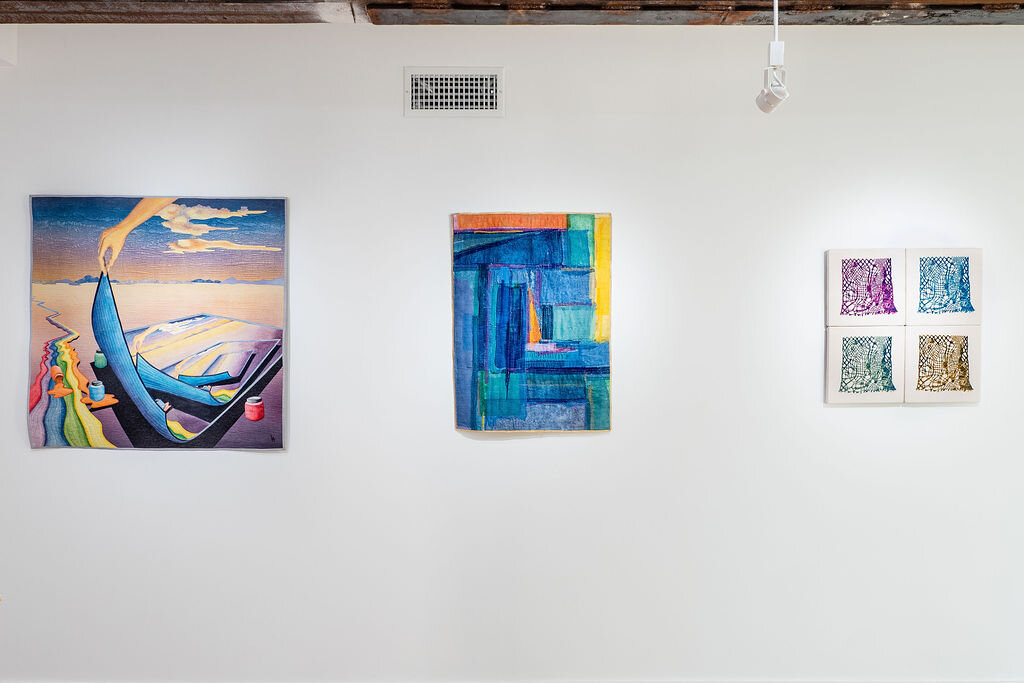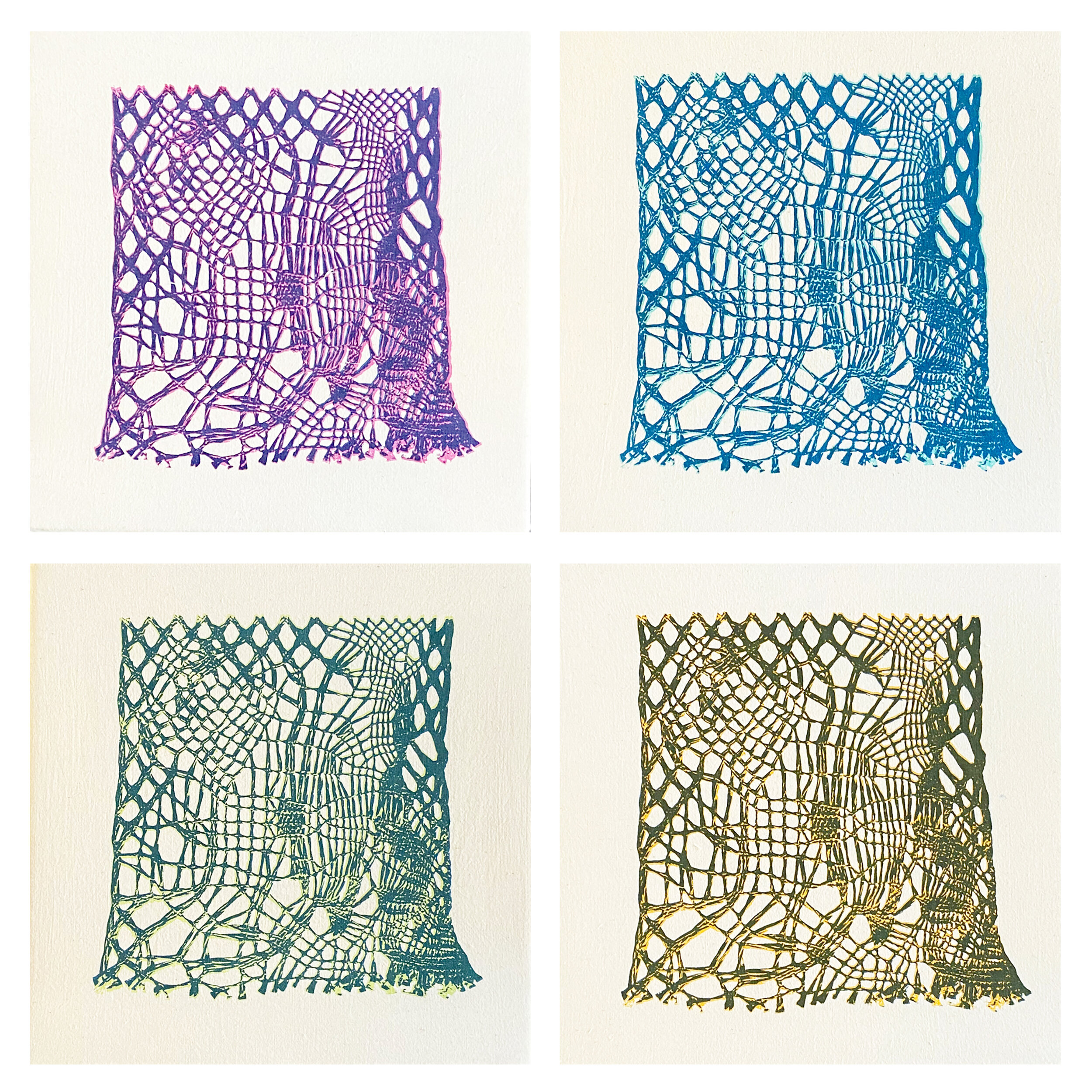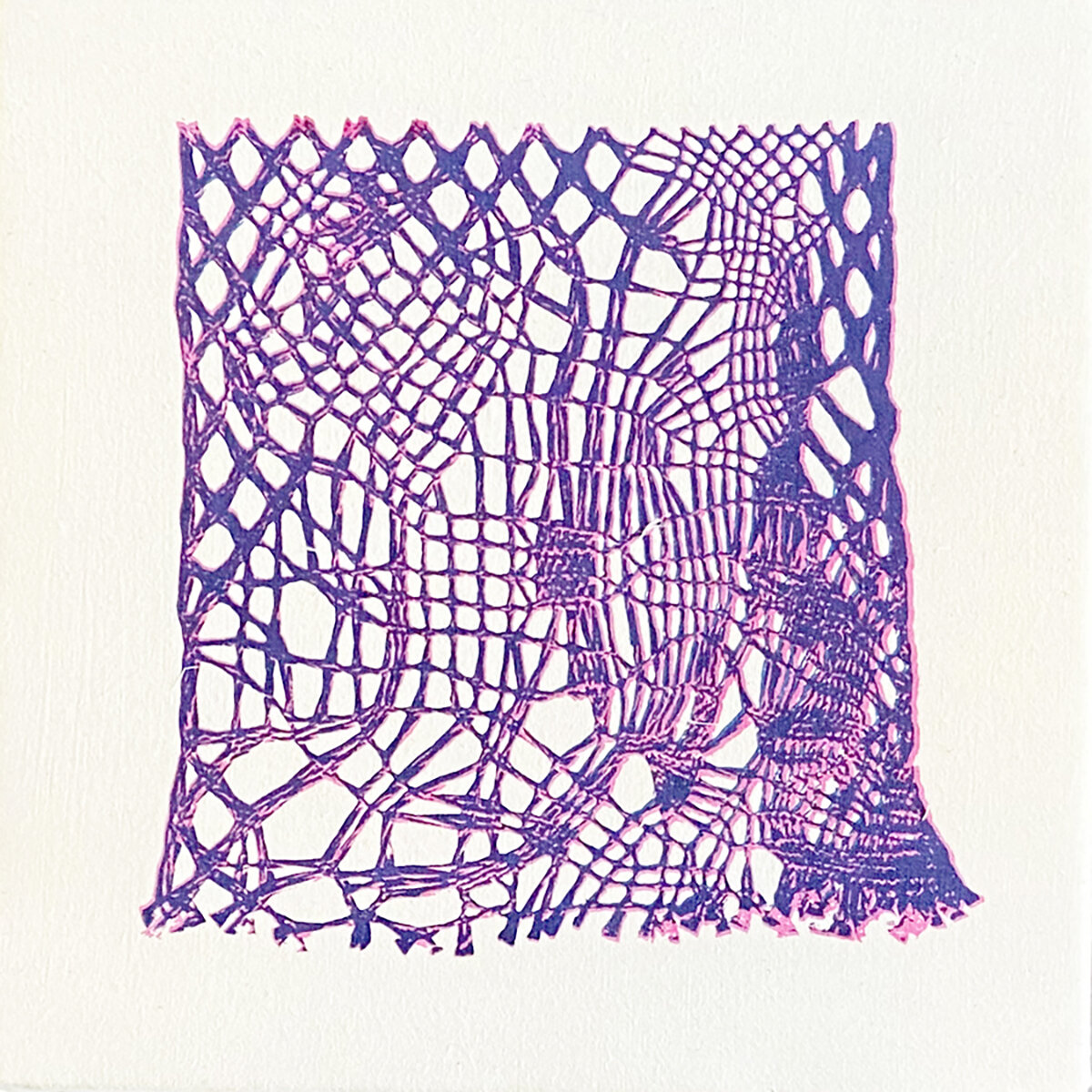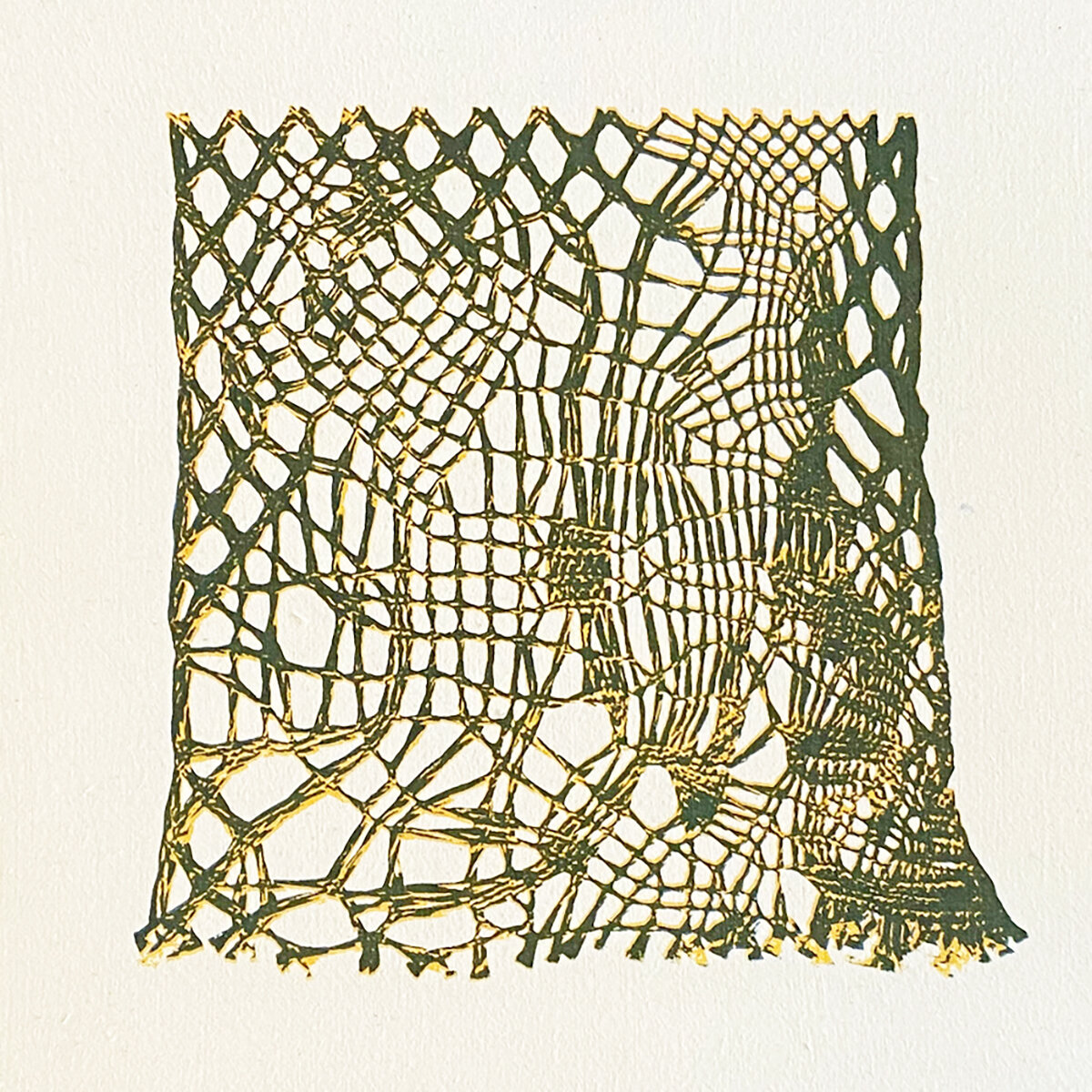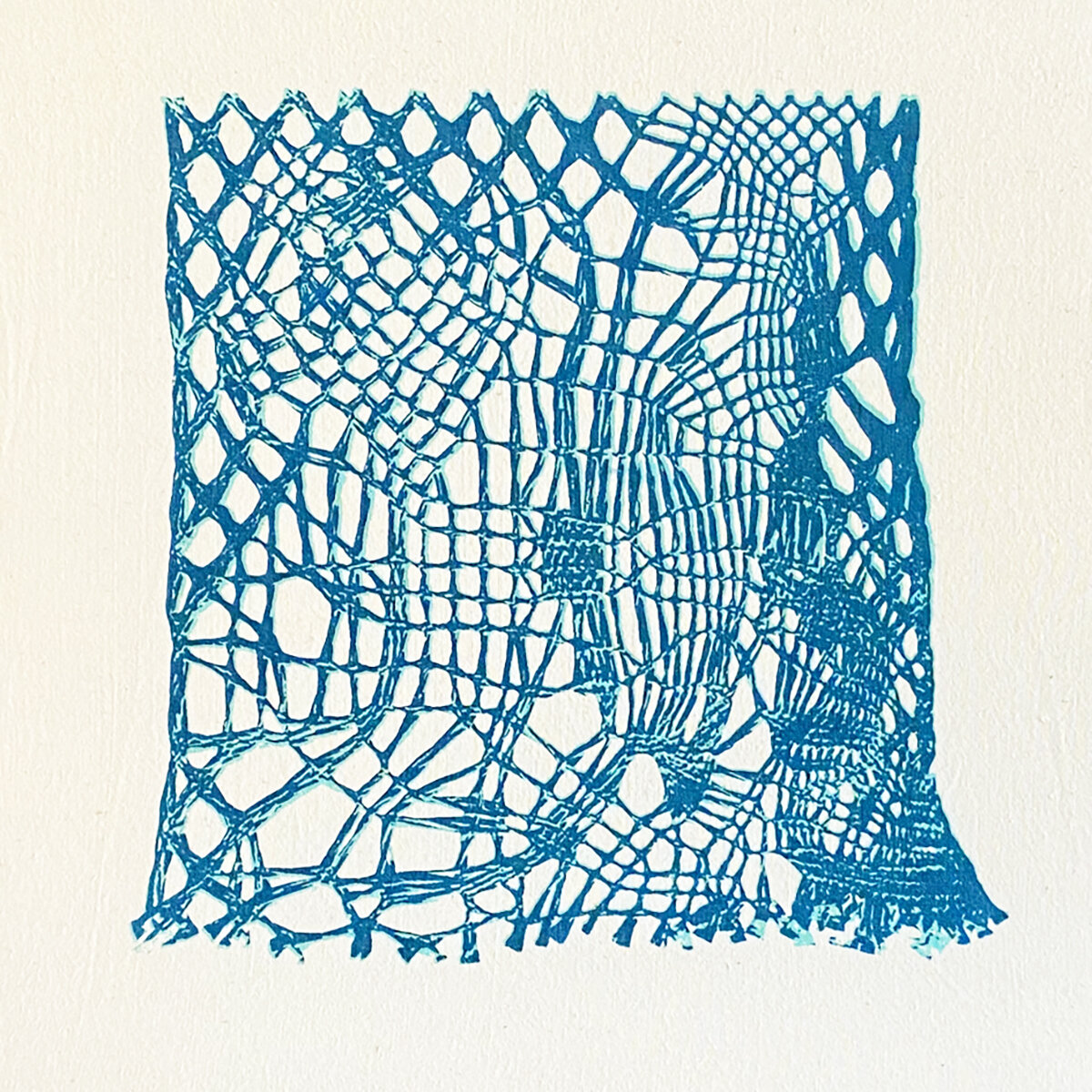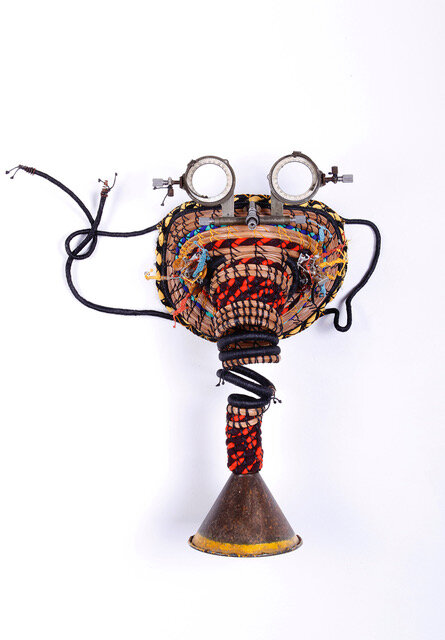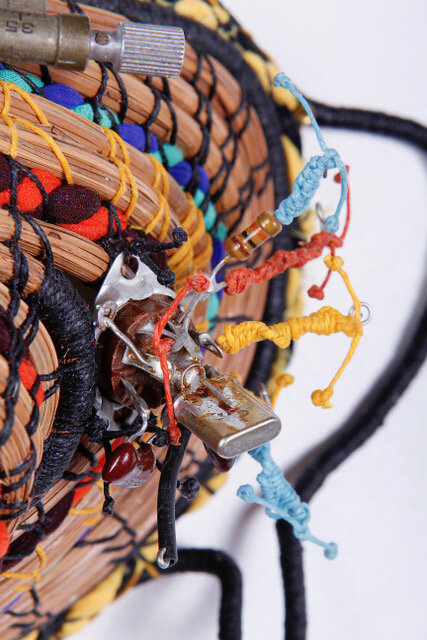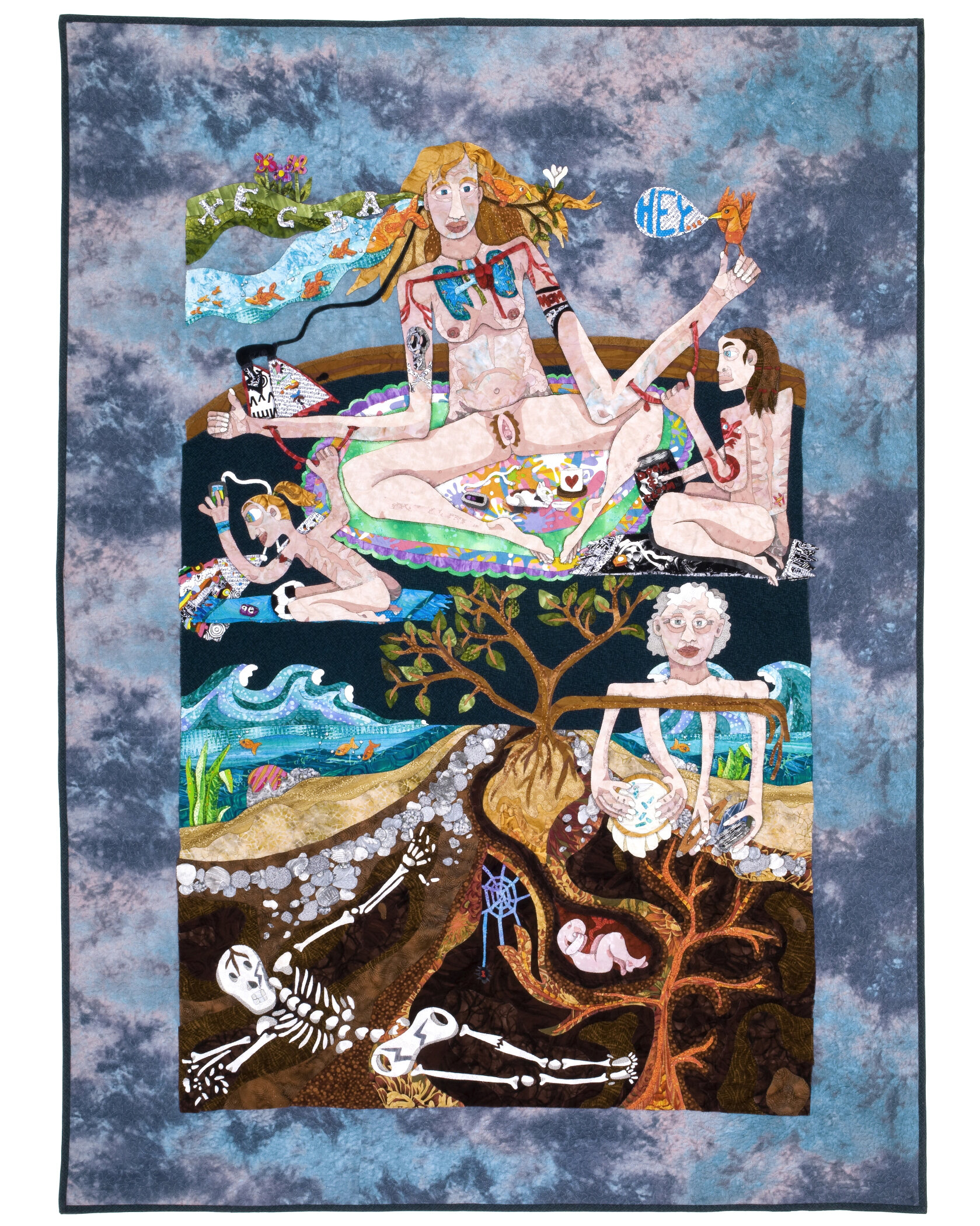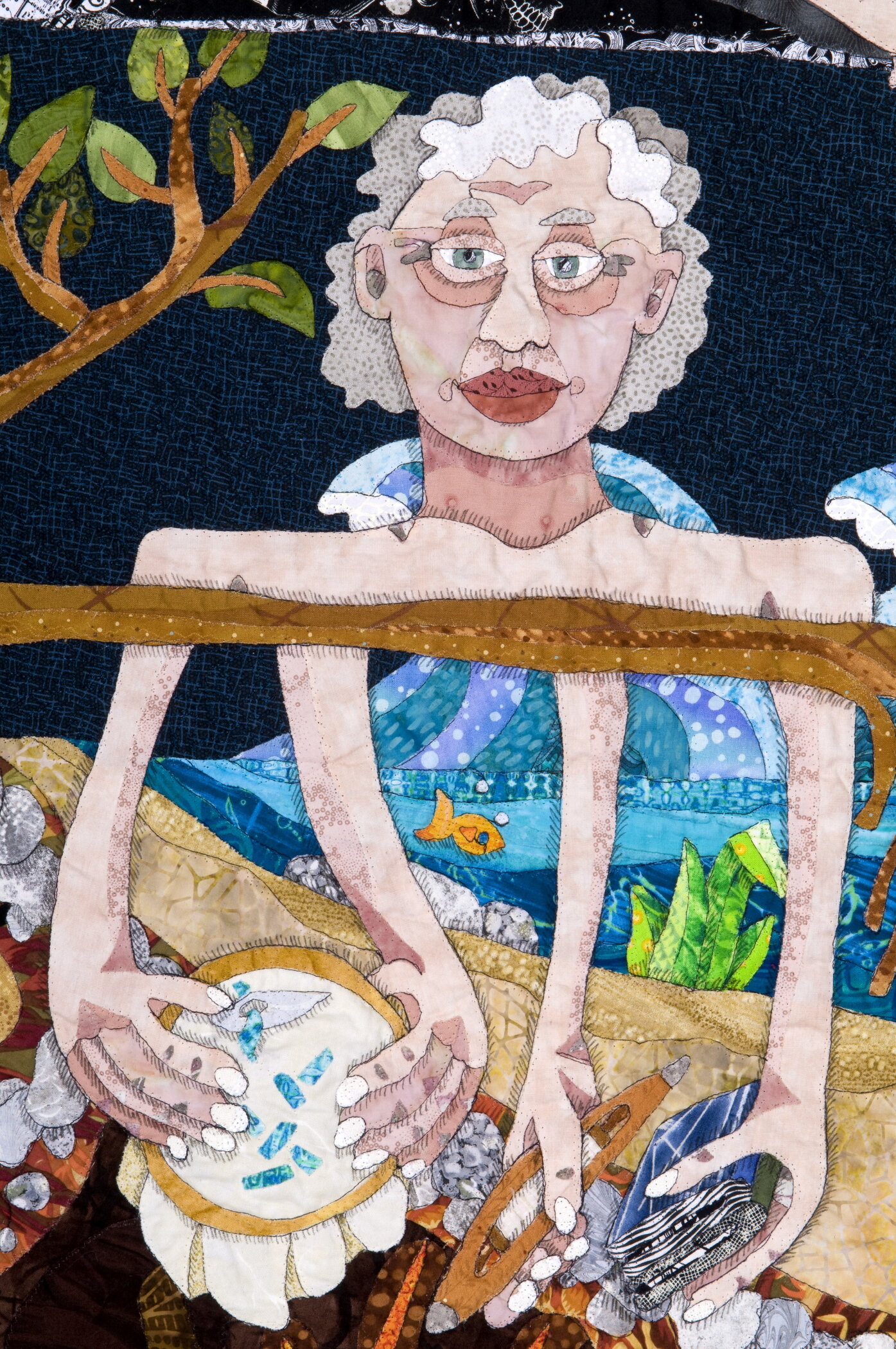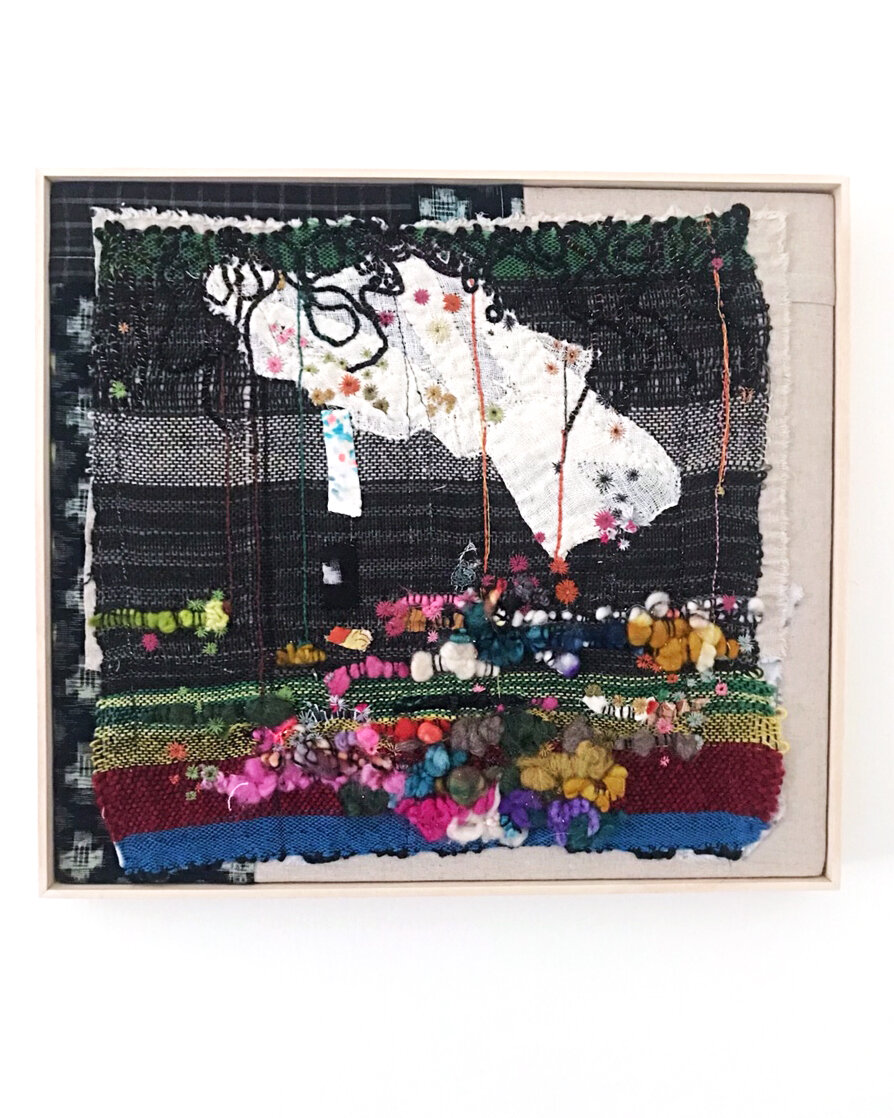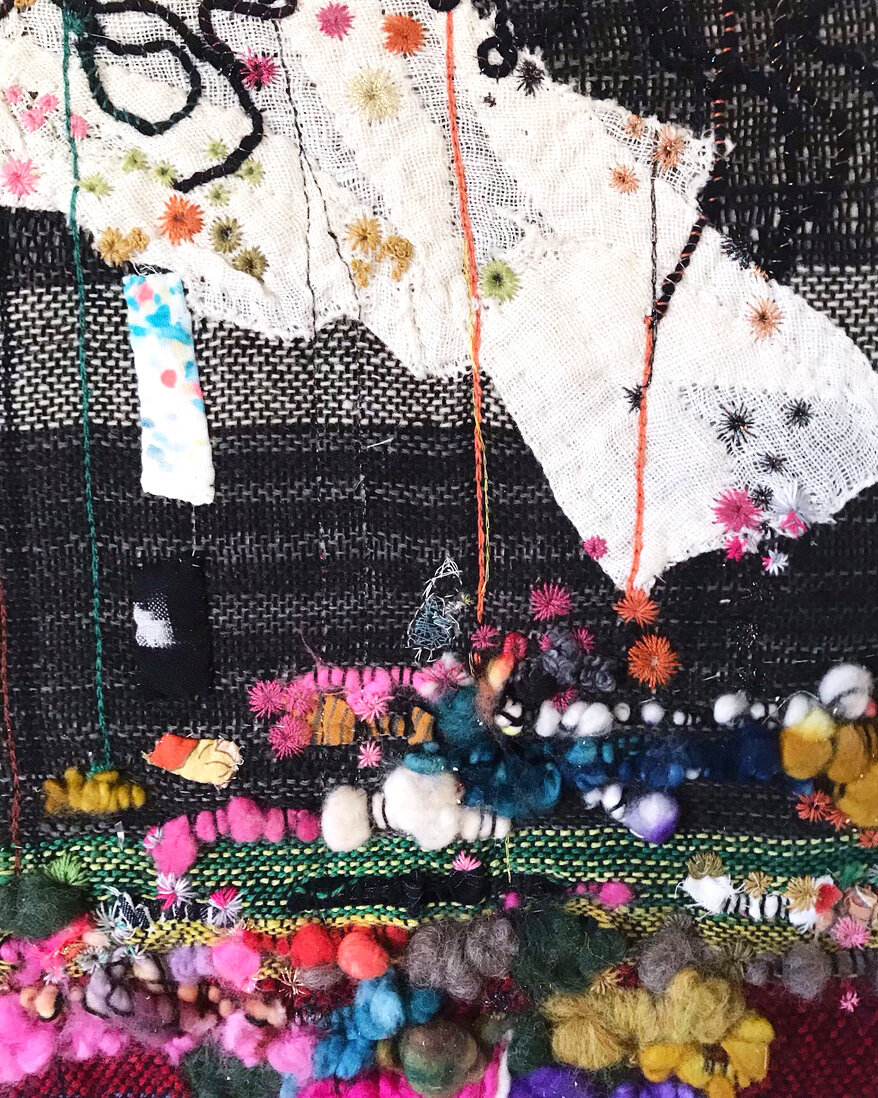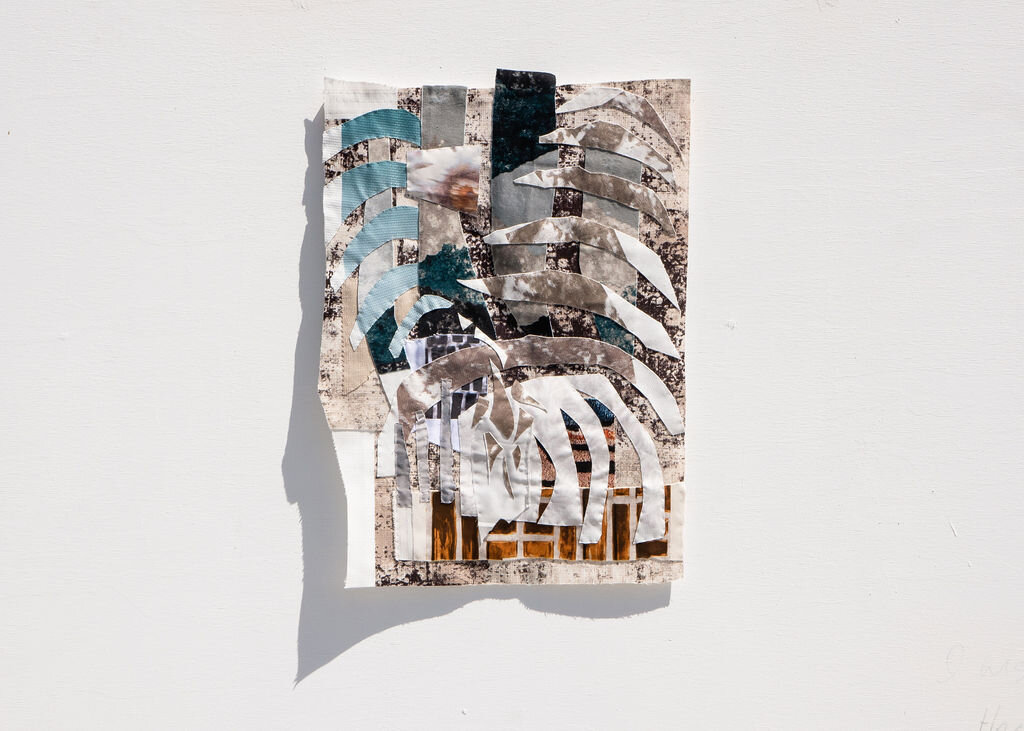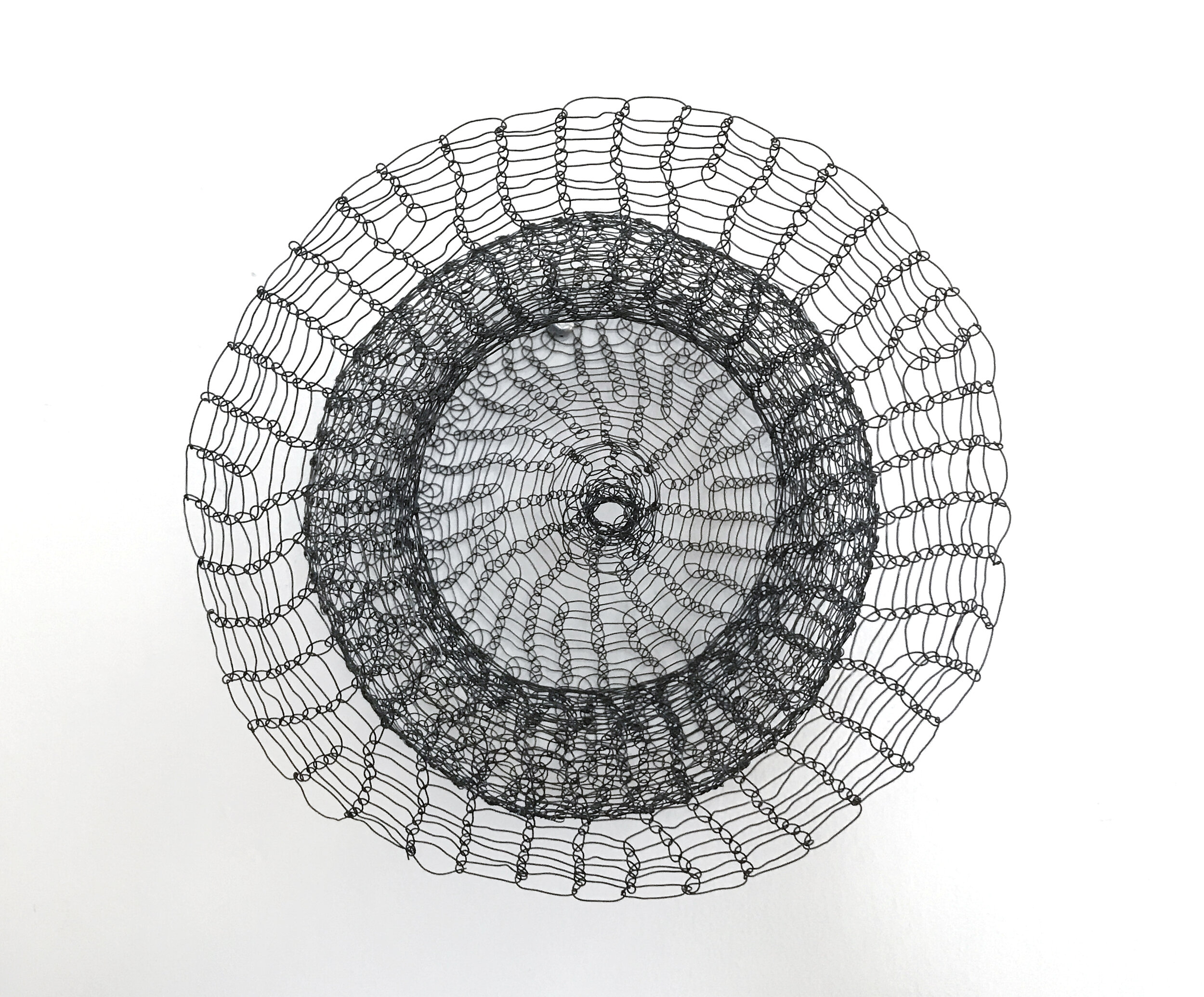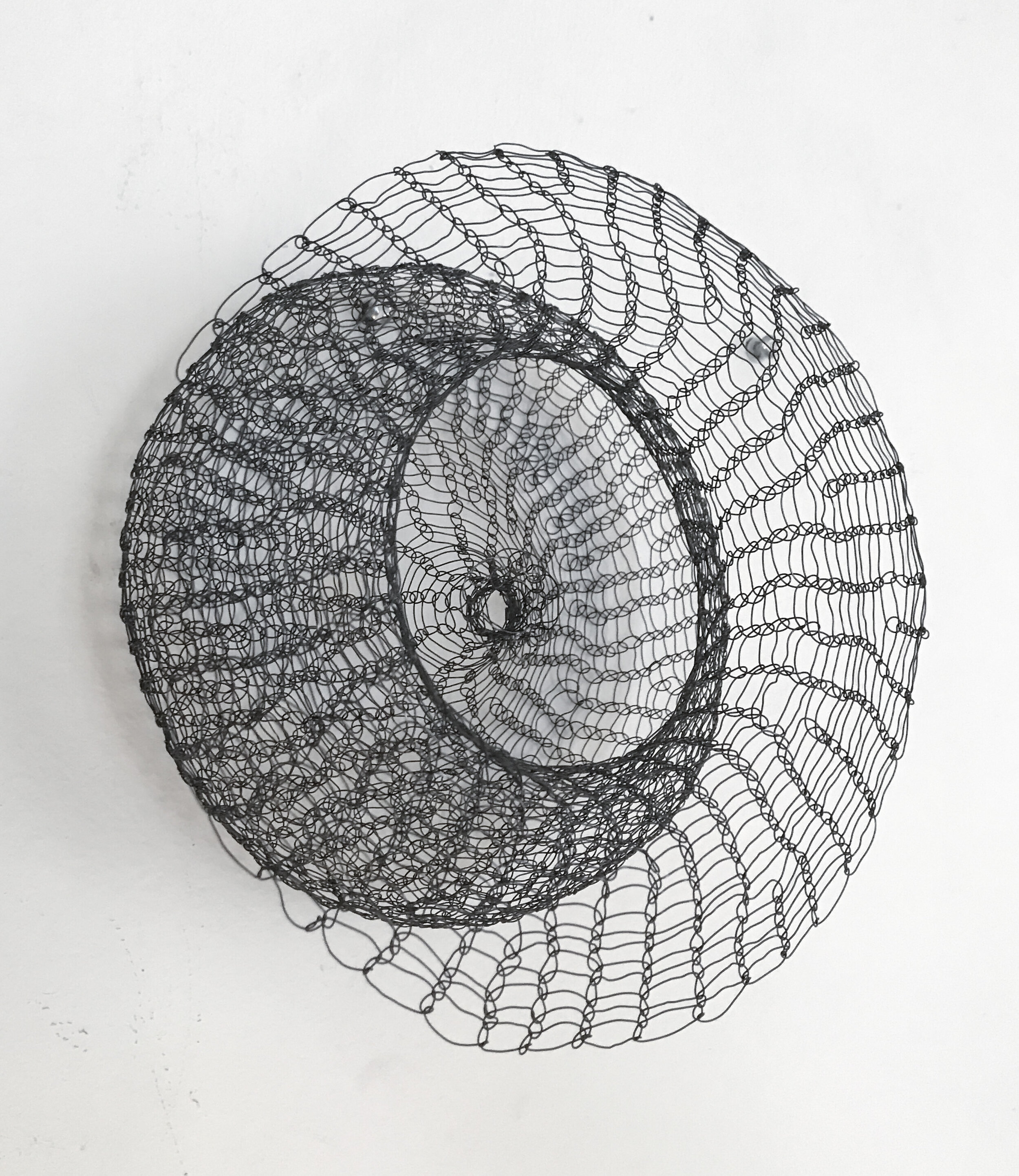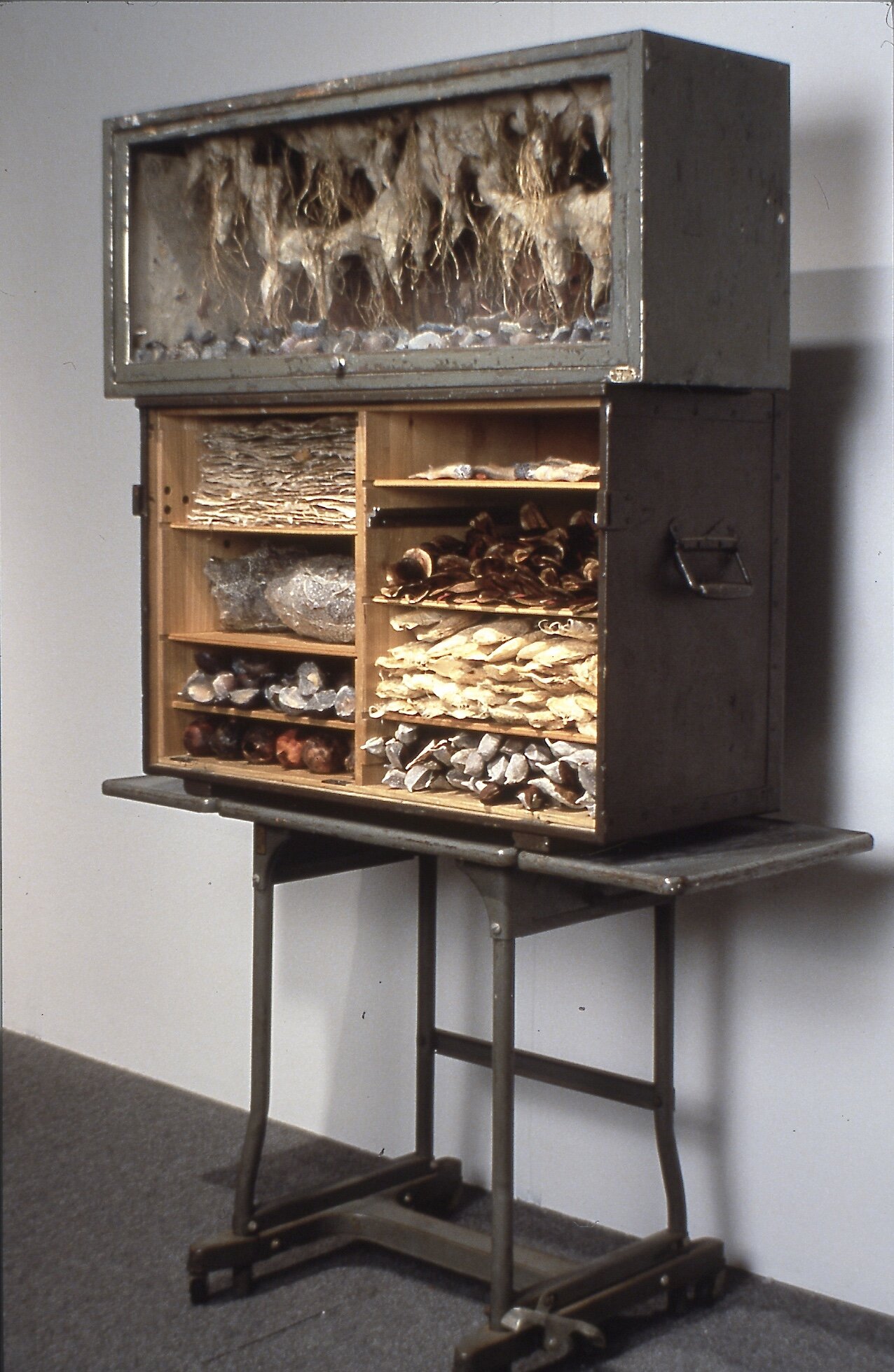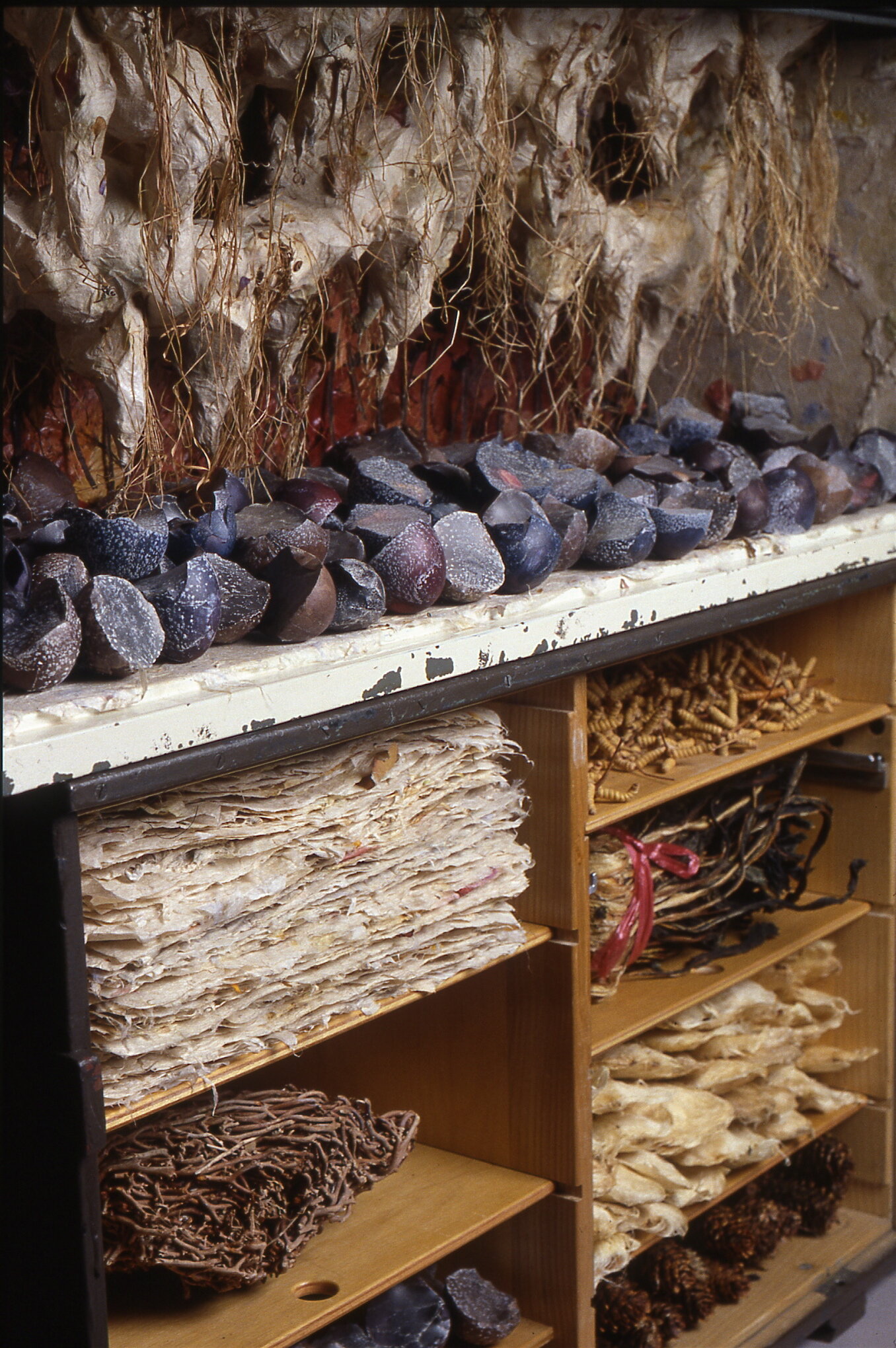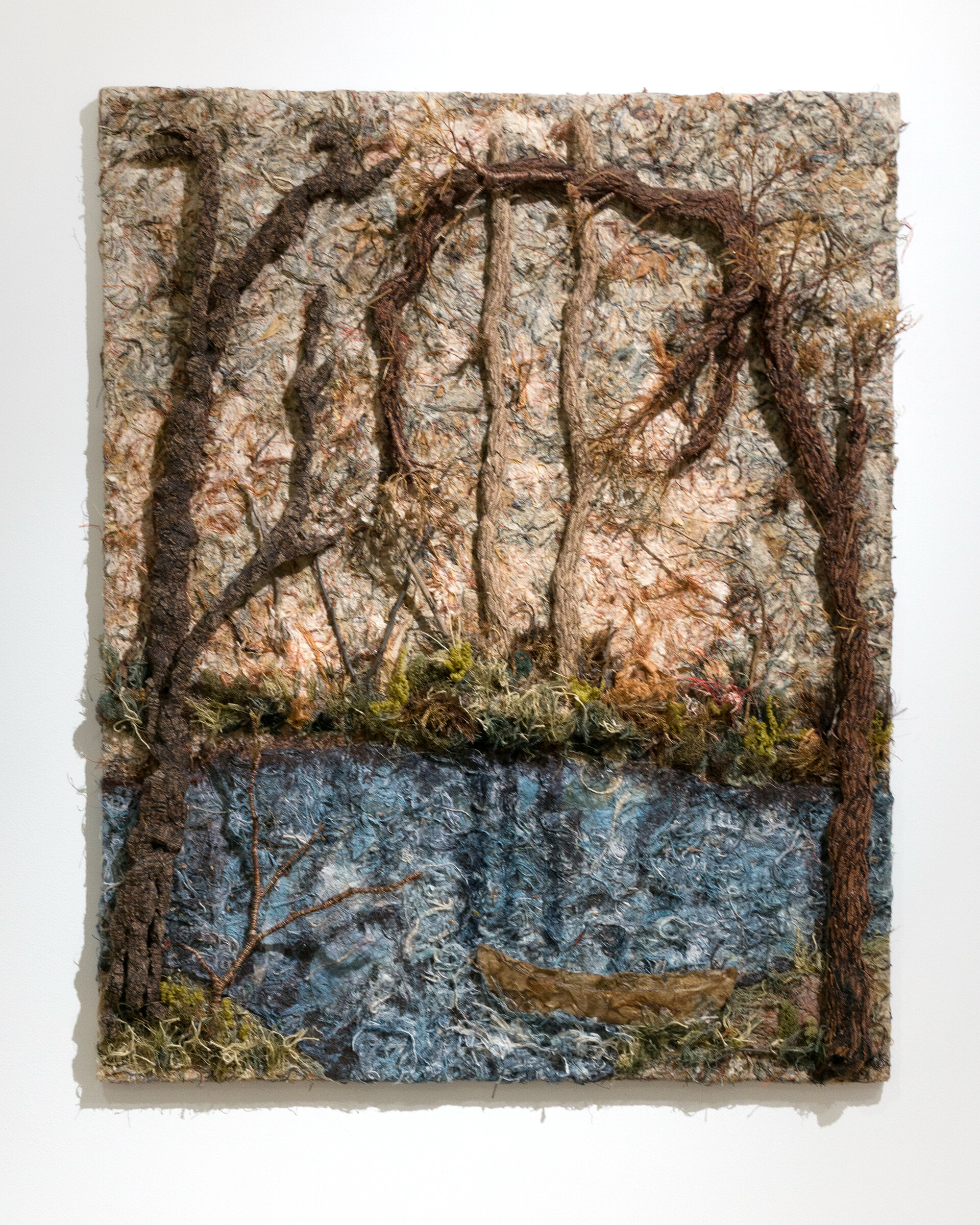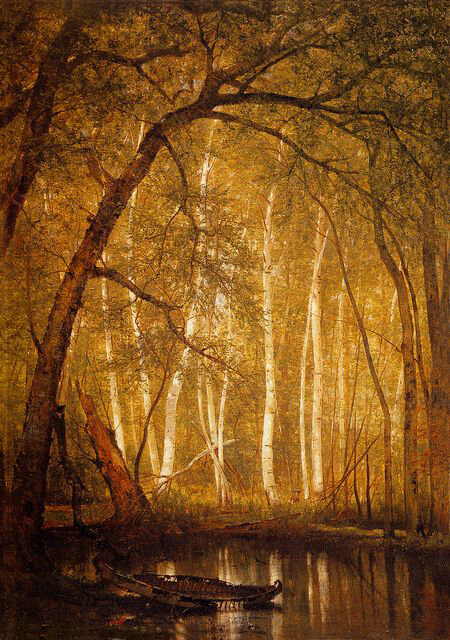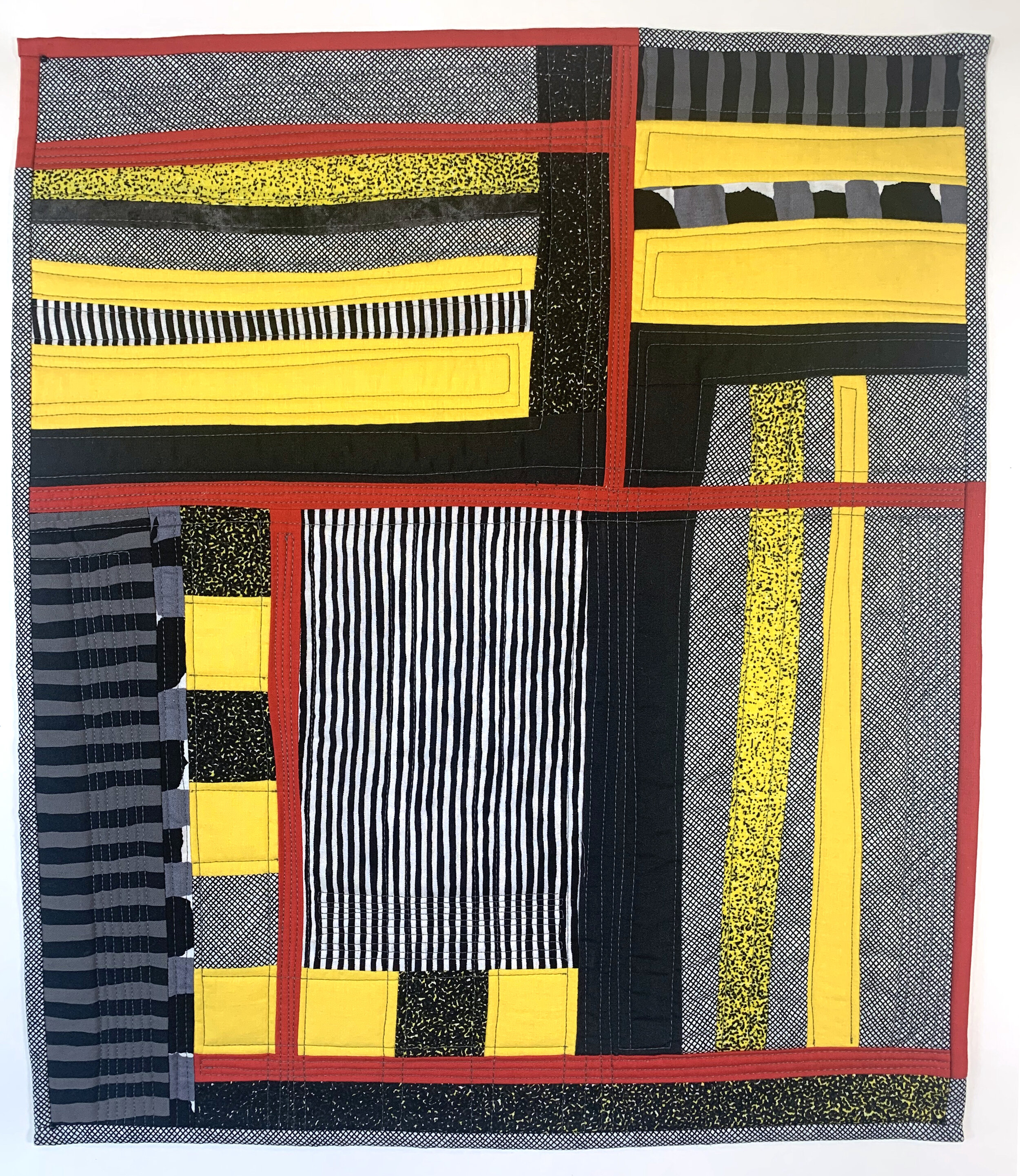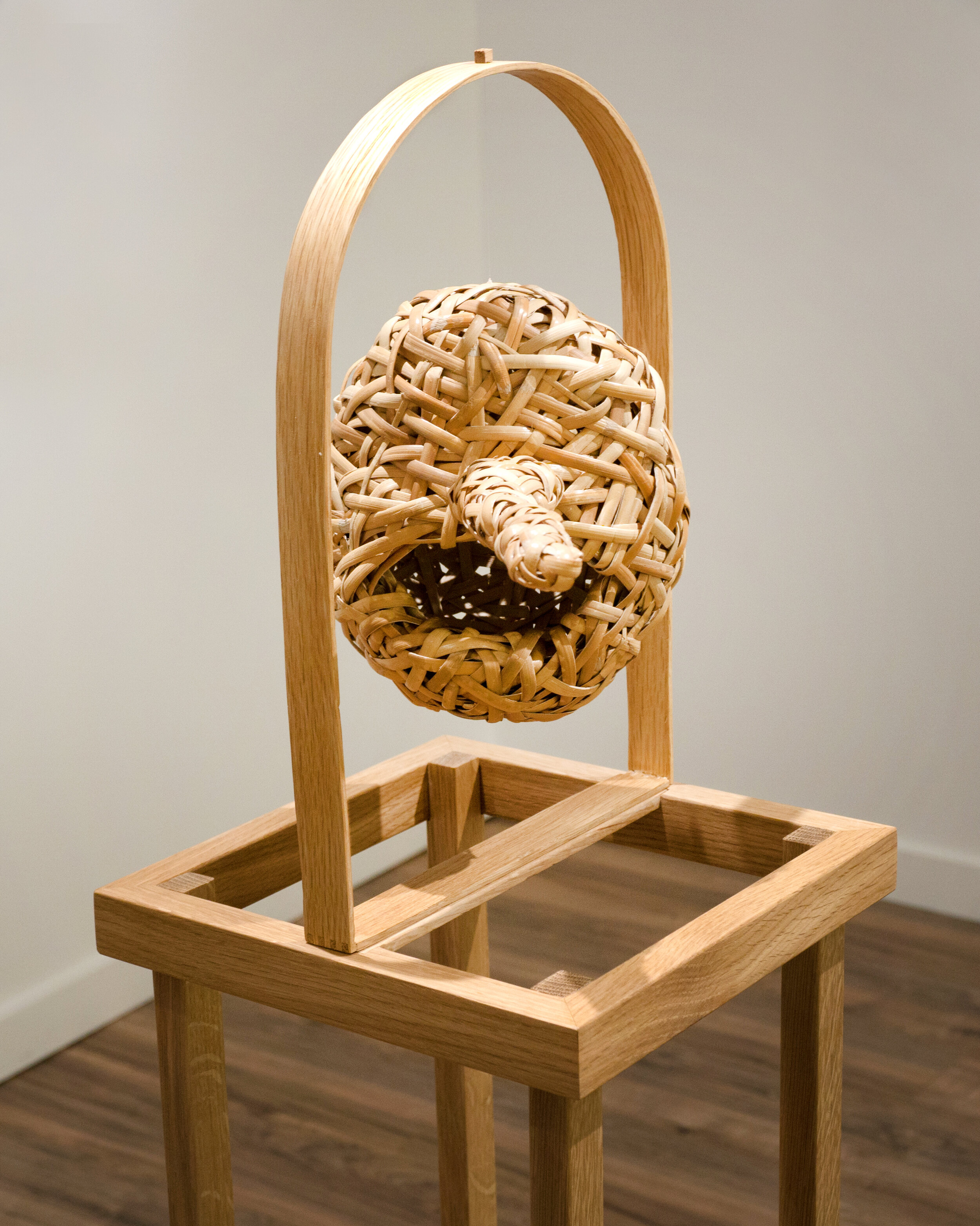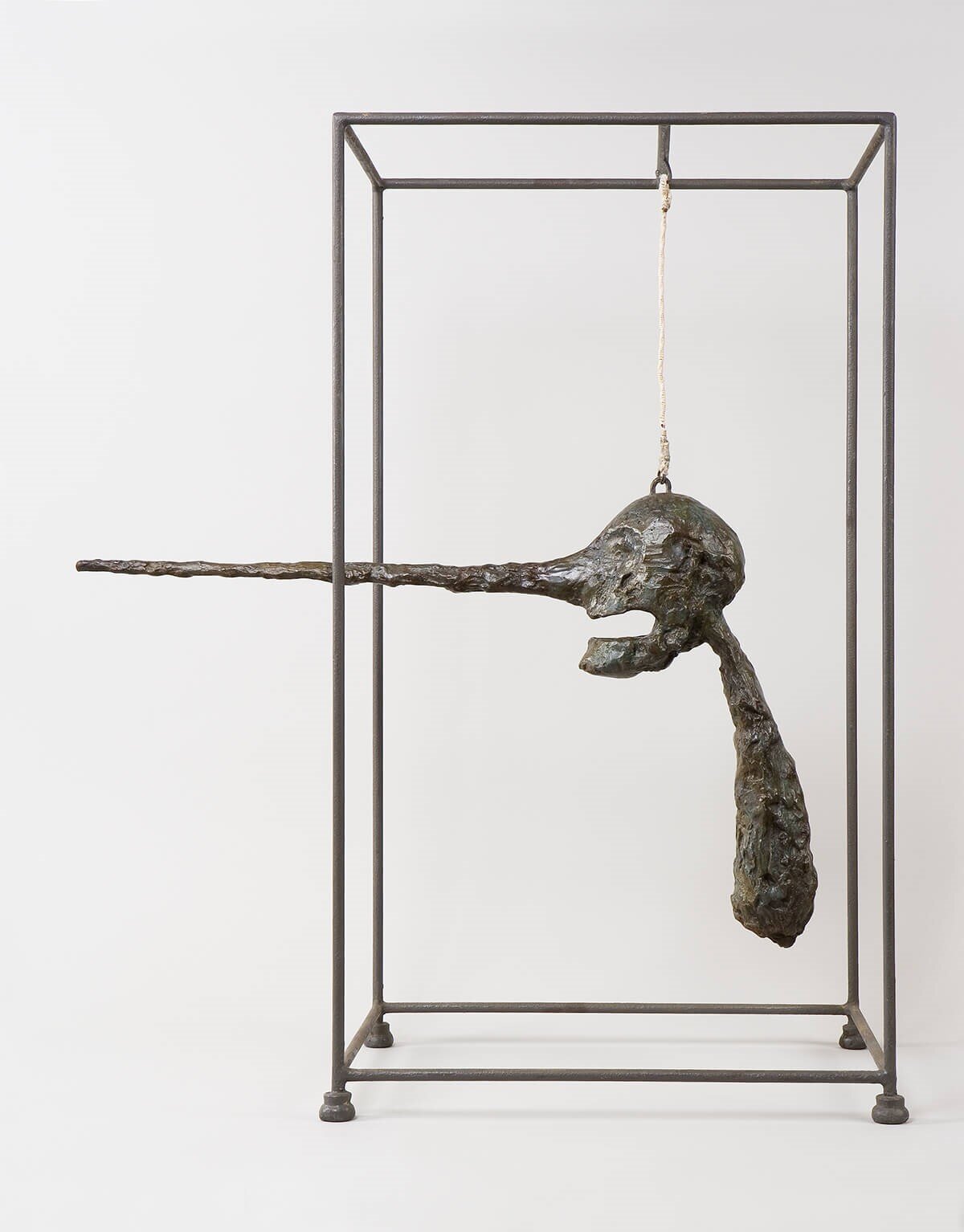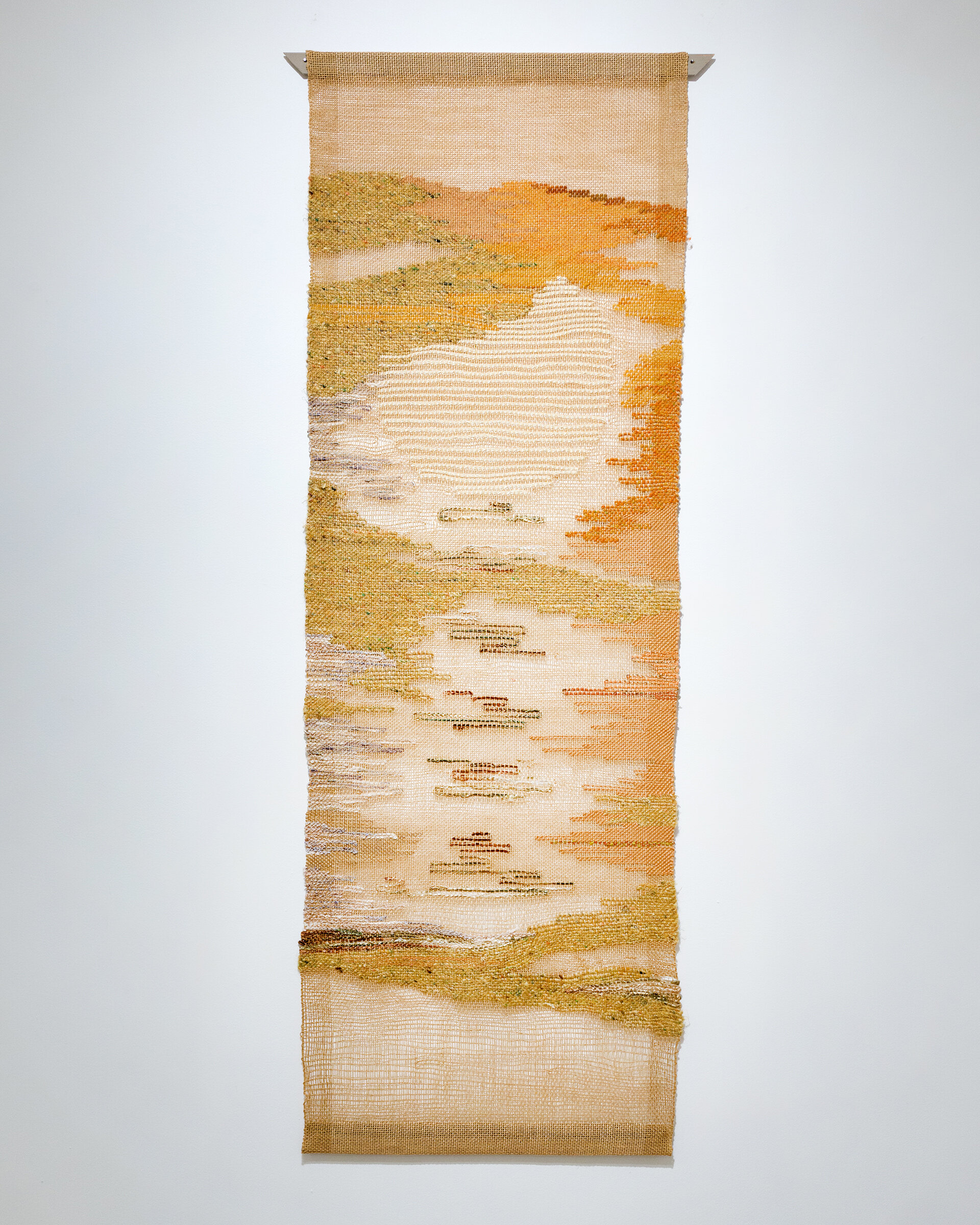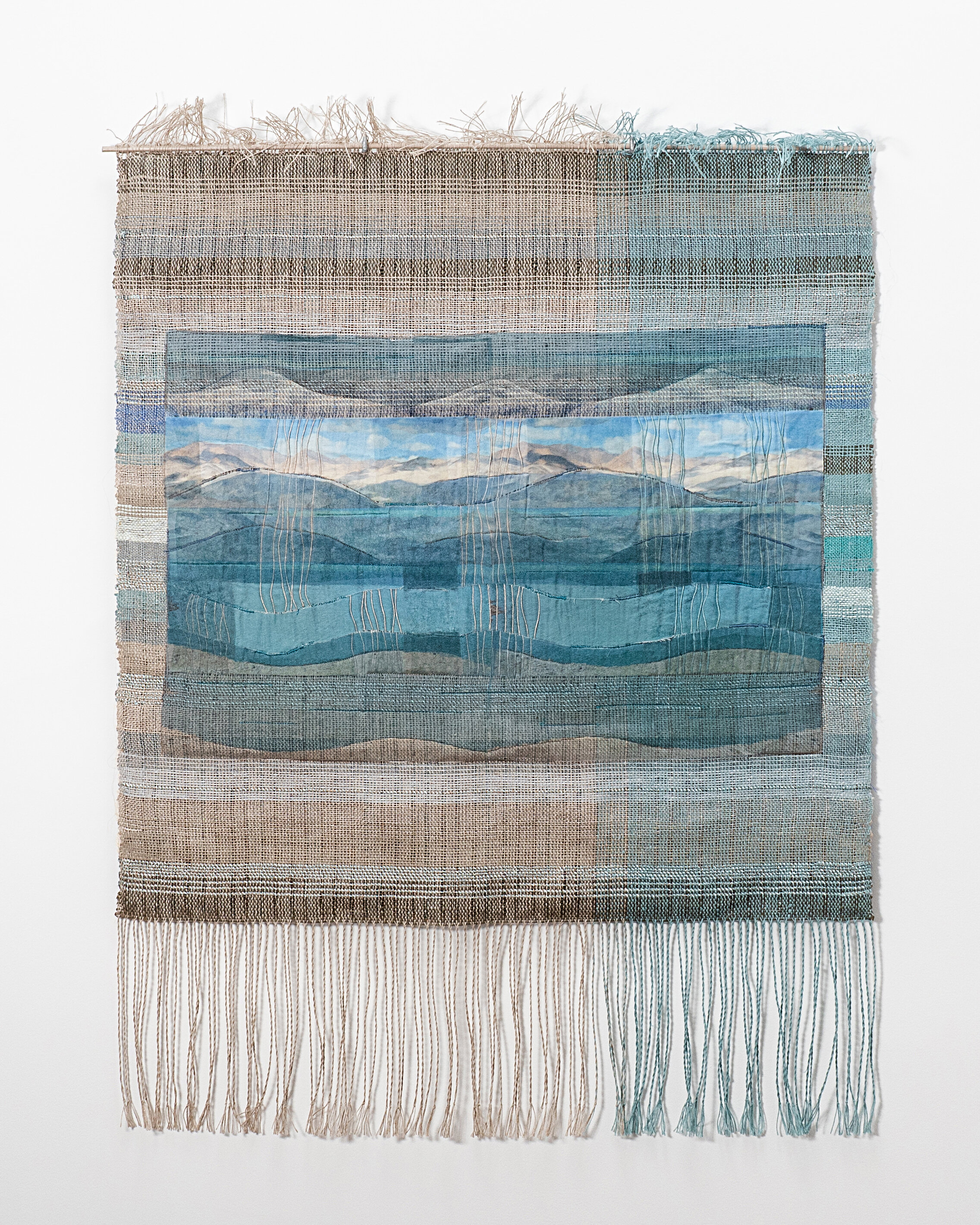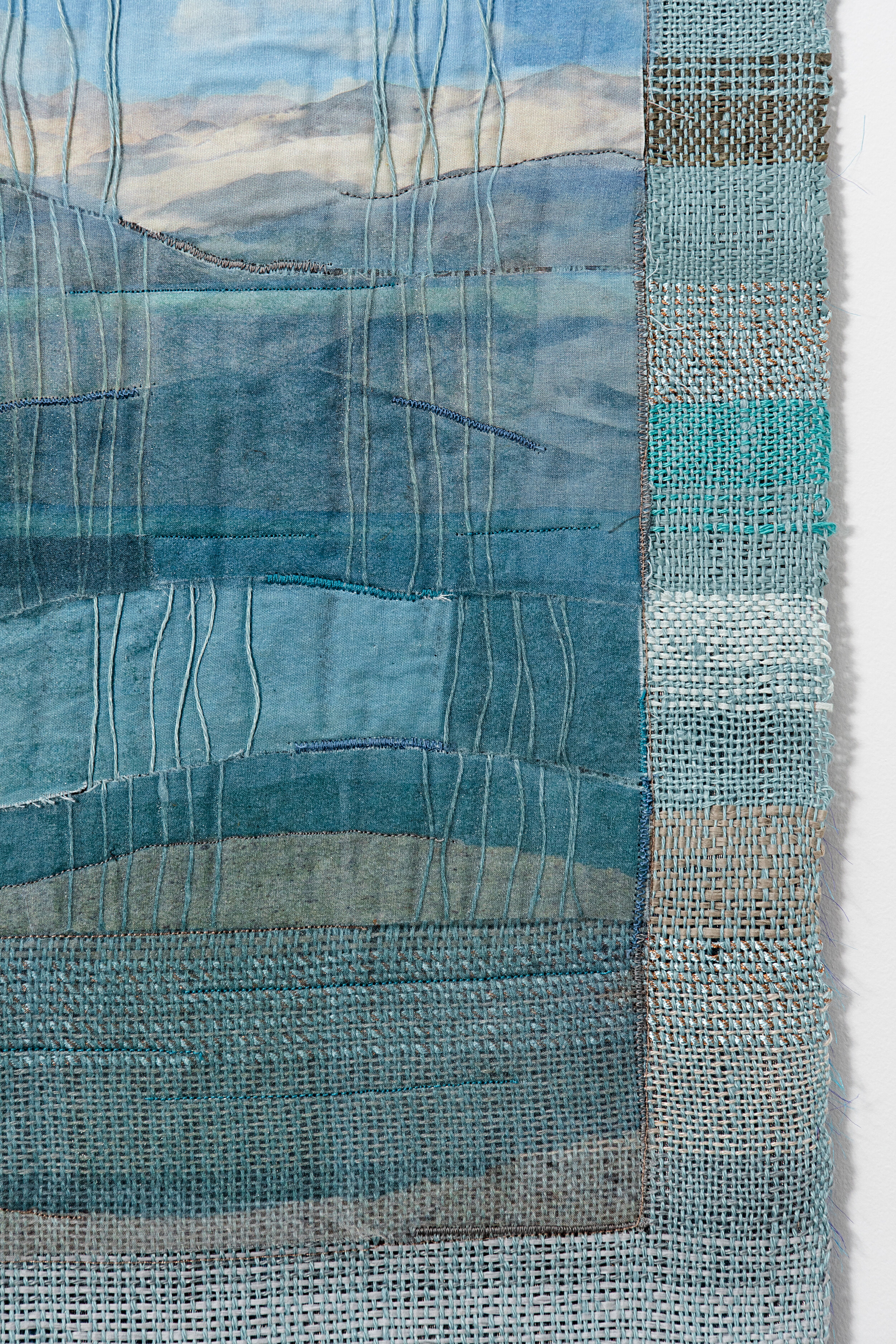California Fibers: Historical References
by California Fibers
Curated by Aneesa Shami Zizzo
February 20 – March 28, 2021
View in person by appointment only.
Inquire about purchasing artwork by emailing info@thestudio203.org.
This exhibition examines history through the lens of fiber art. Each artist addresses a different aspect of history, including art historical movements, personal histories, craft history, historical sites and world mythologies. Techniques used include: weaving, quilting, basketry, dyeing, printing, knotless netting and applique. A written statement by the artist accompanies each piece, describing how their work relates to the theme of referencing history.
Curated with museology in mind, there is a distinct separation between two halves of the gallery. One area includes work that is object-based, alluding to traditional forms of textiles and craft histories that one might see in an institutional setting. The second area features work that references Western art historical movements, including homages to artists and notable paintings, and overarching themes of world mythology and personal journeys.
California Fibers members included in this exhibition: Linda Anderson, Charlotte Bird, Carrie Burckle, Marilyn McKenzie Chaffee, Gail Fraser, Polly Jacobs Giacchina, Lydia Tjioe Hall, Susan Henry, Brecia Kralovic-Logan, Kathy Nida, Carol Nilsen, Michael F. Rohde, Aneesa Shami, Rebecca Smith, Cameron Taylor-Brown, Debby Weiss and Peggy Wiedemann.
Exhibition Views of Historical References
Photos by Cecily Brown
Virtual Walkthrough of Historical References
Individual pieces of Historical References
Featuring each California Fibers member participating in this exhibition. All statements below are the artists’ own, respectively.
Carrie Burckle
An Homage to Ed Rossbach, screen printing ink on muslin mounted on stretcher bars
24” x 24”
@carrieburckle
Referencing Ed Rossbach’s "Small White Lace" which he created before 1974, in vinyl tape with a bobbin lace technique, each screen print is done in 2 colors, where the underlying color is transformed by the top color of the same blue ink.
Michael F. Rohde
Boro, tapestry and embroidery: wool, silk, natural dyes
33½" x 31½"
@michaelfrohde
The reverence for cloth is strong in many traditions, particularly in Japan. Scraps of fabric are not discarded, but recycled to new life. The term Boro is applied to such reconstructed textiles. The beauty of this idea and of the results of this reverence are the basis for this tapestry.
Charlotte Bird
Sedna, hand dyed and commercial cotton, polyester thread; techniques: hand cut and fused applique, machine stitched, machine quilted
48" x 30”
@bird5902
Sedna is the Inuit goddess of the sea. She lives at the bottom of the ocean and controls the sea mammals that the people hunt for subsistence. When the hunters bring home a whale, walrus or seal she must be thanked.
Peggy Wiedemann
Cease-Fire, toy gun, hummingbird nest, Irish waxed linen, yarn, paper, willow, bamboo, palm
10” x 12” x 4”
@peggywiedemann
Guns should not be used for violence.
The Mask, pine needles, rag cordage, Irish waxed linen, paper, funnel, old optometry glasses, found objects
13” x 12” x 4”
@peggywiedemann
Be kind to others, wear a mask.
Kathy Nida
One of My Kind, commercial and hand-dyed cottons; fused, machine-stitched, and machine-quilted, hand-embroidered, hand-inked
57” w x 80.5” h
@knida
Generations tug at each other, sometimes in an all-out blood war, dragging what seems like the last of my life force in their attempts to become independent. Past generations support and lie beneath, their tutelage now mine, their solid strength in me, their backs beneath my current chaos.
Debby Weiss
Restoration, woven, collaged and stitched wall piece
15” x 17”
@specksandkeepings
Restoration is inspired by this past year, 2020 of the pandemic and thoughts of many centuries and decades prior, to the overwhelming numbers lost. It is a homage of the perseverance of man having gone illness, plague or genocide to move forward and follow the light.
Living in my head
Not saying a word
Silence
Surrounded by a sea of people
Silence
Say what we want
Never
Say what we mean
Rarely
Understanding the feelings
Sitting in them
Walking thru them
Pretending they never existed
Believing we count
Believing we make a difference
Believing we are nothing
Just a being among others
Just a representation of what we think we believe
Do we even know who we are
Do we know what we look like
Do we know how we sound
Are we the tree that falls in the forest
Silence
If there is no one to hear
What do the words mean
If there is no one to see
How can we feel pretty
How can we feel ugly
If there is no one to touch
How can we feel
Why are we here
Carol Nilsen
Homage to Diebenkorn, hand-dyed silk sheers, upcycled metallic brocade and metallic leaf, and machine stitch with metallic thread
34”x28"
In his Ocean Park series, California Abstract Expressionist Richard Diebenkorn captured our LA light and landscape by repeatedly applying and removing swaths of paint, leaving scratched, almost sheer layers upon layers of color. His work inspired me to hand dye a variety of silk sheers, layer them over upcycled metallic brocade and metallic leaf, and machine stitch with metallic thread.
Aneesa Shami
On Prayer, reclaimed fabric applique
18" x 24"
@aneesashami
This piece is part of the 'Something Sacred' series that shares my memories of visiting Lebanon and meeting my father's family for the first time. 'On Prayer' features imagery inspired by the Mseilha Fort, which is a medieval fortification structure north of the city of Batroun. The Mseilha Fort sits high up on a narrow limestone rock, and was built in the 17th century to guard the route from Tripoli to Beirut.
Lydia Tjioe Hall
Wire Study, looping technique using steel wire
7" x 5" x 7"
@lydiatjioehall
On Ruth Asawa
Ever since I first became aware of Ruth Asawa’s work in Graduate school, I have been drawn to the biomorphic shapes she creates. Ruth Asawa takes a single continuous strand of wire that she then loops into the preceding row using just her hands. This looping technique is efficient because she could work the wire quickly and easily pick it back up to continue creating her large vessel-like forms. I am inspired by the simple repetition in Asawa’s process and how it is informed by patterns found in nature. Both the translucent quality of her pieces and the shadows they cast have been a source of curiosity and wonder for me.
In my own work I experiment with creating wire structures using various techniques including crocheting, weaving, wrapping, coiling, twining, netting, random weave, and looping-- which both holds its form and is flexible. For a piece to be successful you need to find the balance between these two qualities for it to maintain its structural shape and open cells. Together they make up a wired web of lines that overlap and hint at translucent layers that seem to interact and move as your eyes scan across the surface.
I have great respect for Ruth Asawa and her work as an artist; how she was inspired by nature, always experimented with different mediums, and used the creative process to solve problems in her community. I especially appreciate the way Asawa worked in her living room surrounded by her children and family because I find myself working in much the same way
Inverse, steel wire, waxed canvas, cloth covered wire
10.5” x 5” x 8”
Trying to work inside the box…
House on Smoke, steel wire, cloth covered wire, paint
6” x 10” x 6”
This House is riding on a wave of smoke created during the last CA fires we had in the summer of 2020.
Gail Fraser
Rachel Carson’s Song
59” x 33” x 16”
I have always been interested and intrigued with Rachel Carson ever since I read her book called, “ Silent Spring”. My work,”Rachel Carson’s Song” relates to the deadly excessive use of the dangerous chemical pesticide DDT, producing a river of death that affects not only wildlife, but all life. It is the political power behind major industries and corporations that generates many pollution problems. Rachel Carson, a scientist, is a hero for many of us as she was the one who discovered the deadly affects of DDT and fought with government for change in using DDT in the United States saving wildlife, human life and our water sources. My piece is in three different sections that I have created in honor of Carson’s discoveries.
1. In this piece, an old typewriting desk is the foundation and rock as it represents Carson’s passion for writing research papers, published journals, magazine articles, and an author of five books all related to science.
2. The field desk represents Carson’s field trips and field studies that allow her to collect specimens from different places and carried back to the lab for further studies.
3. A science cabinet showing broken colored eggs represents wildlife and human life becoming victims of DDT. The red leaves in the background represents why DDT was invented: to combat a foreign beetle infestation that cost the elm trees their lives. The sculptured form covered with handmade paper and dried grass represents the overuse of DDT, which slowly seeped into our underground water sources, causing cancers in many people and affecting wildlife.
It is ironic that the major chemical industries and corporations are now still selling DDT to foreign “Third World Countries”, and in return, we import products that have been exposed to DDT back into the United States.
The Gathering Ground
Upholstery materials, handmade paper, installation foam, acrylic paint, tree trimmings, wax.
30” x 24”
I have always loved walking and hiking in nature. Often, while on these hikes my mind wanders to seeing panoramic views or what is growing on the trail next to me. But most of all, I think about what it might have looked like before development and roads were built. That is why I am intrigued by The Hudson River School Artists. In looking through pages in one of my books, “The Old Hunting Grounds” became a favorite composition displaying forest interior with its mysterious darkness and centered with a sensibility of peacefulness somewhat like a forest cathedral. “The Old Hunting Grounds” in 1864 was painted by Thomas Worthington Whittredge, (1820-1910) one of the master painters from the Hudson River School.
Fascinated by “The Old Hunting Grounds”, I decided to recreate this forest interior, however, not quite like Whittredge’s work, but by being a fiber artist instead. I had to change the title to “The Gathering Grounds” since I do not hunt, but only gather materials for my art. Next, I decided to create a dimensional landscape collage from several upholstery material sample books. The materials were shredded through a food processor that produced a variety of different materials. I sorted the shredded materials by color and mixed them with cooked kozo and natural materials from nature to form my handmade paper. It was a surprise to find the colors helped me use the handmade paper like a paint brush on canvas. I believe that Thomas Worthington Whittredge and other American Landscape Artists of the 19th century created a history of our unspoiled land and passed on to us a sense of wonder of nature itself that we can appreciate today in our changing world.
Marilyn McKenzie Chaffee
Macleod Tartan Redux, cotton broadcloth and cotton batting
18” x 16”
@mckchaffee
The distinctive dress tartan of Clan Macleod, a proud part of my family story, is deconstructed and reimagined.
Linda Anderson
Beneath the Surface, cotton fabrics, bamboo batting, polyester thread, Jacquard Textile Paints
40" x 40"
@laartquilts
What grabs my heart and tickles my brain are many of the surrealist artists that came before me, especially Dali and M. C. Escher. Their work has influenced much of what I do. Both took storytelling to unexpected places. Much of their approach weaves itself into my work in subtle ways at times. I love creating that kind of imagery in telling a story.
Polly Jacobs Giacchina
The Head: Homage to Alberto Giacometti, random weave cane on wood base
52" x 10" x 14"
@pollyjacobsgiacchina
I have referenced and been inspired by one of my favorite artists, Alberto Giacometti. He was renowned for his figurative sculpture. I was especially drawn to his piece, “The Nose (Le Nez)”, 1947.
Brecia Kralovic-Logan
A Sense of Place, naturally dyed silk collaged with copper
12" x 4" x 3"
@kralovicloganbrecia
I grew up in The West’s Most Western Town. Scottsdale Arizona was founded on the land that had been the home of Pima, Papago and Maricopa peoples for centuries. Growing up I was surrounded by First People culture that was translated to me through a white colonist lens.
My piece “A Sense of Place” honors the desert and the people who call it home.
Rebecca Smith
After Lenore, transparent tapestry; linen, wool, other fibers
39" x 13"
@rebeccasmithtapestry
While researching for the theme Historical References, I rediscovered the work of Lenore Tawney. From the vantage point of my current weaving pursuits, I found an affinity with her work in two respects: an interest in gauzy, transparent weaving, and a fascination with circles. My piece "After Lenore" explores the open weave structure that Lenore pioneered in such works as "Seaweed" (1961). In my piece, I have explored how Tawney's innovative style and techniques can contribute to the transparent tapestry format that I am currently pursuing.
Susan Henry
Cityscape, recycled men's wool trousers, Shibori resist, discharged, foundation pieced on cotton canvas
59" x 26"
This piece was inspired by a photograph of a misty skyscraper skyline. The first skyscraper constructed was the Home Insurance Building in Chicago, Illinois. It had 10 floors, was 42 meters tall and was completed in 1885. Many more followed in the larger cities of the US, eventually resulting in a competition between Chicago and New York City that began in 1895. The 19th century brought many new ideas and inventions which inspired architects and "engineers to build upward including 'flameproof' steel construction, electric illumination, and the elevator - modern marvels of their time.
Cameron Taylor-Brown
Threads of Time / Bulungkol Lake, Pamir Plateau, China, linen, paper and metallic yarns, silk and cotton fabric, wood and paint
Techniques are weaving, photographic transfer, embroidery
33” x 24.5”
@camerontaylorbrown
Bulungkol Lake is located along the present-day Karakorum Highway, which follows a portion of the ancient Silk Road trade route. Rather than a camel, we rode a bus, and all along the way we saw ruins of ancient caravansaries where travelers along the Silk Road would spend the night.
About California Fibers
California Fibers, founded in 1970, supports artistic growth and professional advancement for contemporary Southern California fiber artists.The imagination and superb craftsmanship of these artists place them in the highest echelon in their fields. The group has an extensive exhibition history in the USA and abroad. Many of its members are well-represented in museums and private collections and are recipients of prestigious awards from around the world. Their creative expression includes weaving, basketry, sculpture, quilting, embroidery, felting, surface design, knitting, crochet, wearables and mixed media.
www.californiafibers.com/
@ca_fibers

